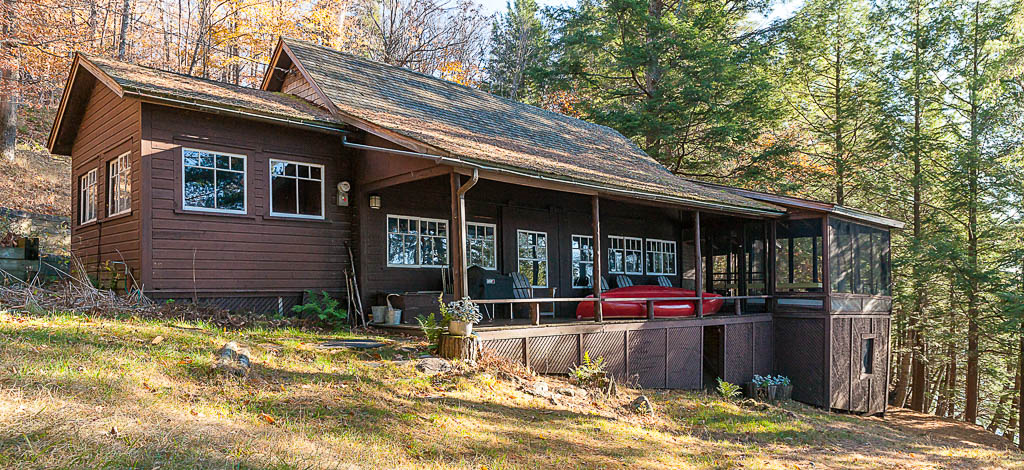
The Hemlocks



Being from Chicago at the time he bought a shoreline lot from Daniel Campbell in 1906, George Alfred Grant-Schaefer might appear to qualify as being a member of the upper class from an American “big city”. He was, however, born in Williamstown, Ontario, a small community near Kingston. He was a musician, studying piano and voice in Montreal where, perhaps, he met Robert Stanley Weir, Edward Douglas and others who would become his Ogden lakeshore neighbours. We do know from the Stanstead Journal that he was a guest of the Weirs at Cedarhurst on several occasions around the time his own cottage was being built. After a period in London where he studied organ, he moved to Chicago to serve as organist-choirmaster at Centenary Church there, and then as head of the vocal department at Northwestern School of Music in Evanston, Illinois. He composed over 100 piano pieces for pedagogical use and some 90 songs, as well as anthems and an operetta. His piano pieces enjoyed a high reputation among teachers. Many of his compositions were clearly influenced by the time he spent enjoying the lakeshore every summer. In 1908 Grant-Schaefer did the vocal harmony arrangement for Weir’s O Canada!, and it seems most likely that the two friends’ collaboration occurred at one cottage or the other. The initial plans for Grant-Schaefer’s cottage consisted of one large, main room with a stone fireplace and two small bedrooms plus a kitchen on the side away from the lake. A covered porch ran the length of the house on the west side, overlooking the water, and continued around the south end providing an outdoor sleeping porch. Soon after, a small elevated stage was added to the north end of the cottage, with a square Steinway grand piano in place. In the mid-1800s Steinway built more square pianos than uprights and grand pianos combined, so apparently they were very popular. Alas, by the 1950s time and mice had taken their toll; the sounding board was repurposed as an awesome rosewood workbench. The legs and pedals are still in service, holding up a big table on the outdoor dining porch. Although the lot chosen by Grant-Schaefer did not have easy lake access - a steep cliff rises up above the small beach area - it does provide a fine view to the northwest of Owl’s Head. The property was densely covered with mature hemlock trees many of which remain standing today. He called his new cottage “The Hemlocks”.
Douglas Weir, then a Canadian Army Captain, was killed on November 11 1918, the last day of World War I. His widow, perhaps as part of an exchange of assets in the course of the settlement of his estate, sold the above property for $1.00 to her mother-in-law, Margaret Alexander Douglas Weir, wife of the Hon. Robert Stanley Weir, judge, on Sep- tember 16 1919. [B 51 19704] On April 9 1921, Dr. James Robert Goodall bought Grant-Schaefer's half-acre and "country house" for $2000.00. [B 52 21280] On July 23 1931, Dr. Goodall bought the most northerly of the three parcels from Mrs. Weir, now described as a widow. [B 56 30795] On August 24 1937, he bought the most southerly half-acre parcel of the three from Al- exander R. Douglas, thus completing The Hemlocks waterfront as it now exists. Dr. Goodall died September 25 1947, having willed The Hemlocks to his only son, Rob- ert Graydon Weir Goodall ("Gay"); his widow, however, to have the use of it during her lifetime. Mrs. J.R. Goodall died on June 29 1949. John and Shirley Goodall Stairs were using The Hemlocks at this time, and continued to do so for the next three years, pre- sumably with Gay's consent. He had no interest in it - he and his wife preferred, he told me later, to spend their holidays in travel. He was a general surgeon. On August 25 1952, Gay sold The Hemlocks to Martha Lamb McLean and Margaret Lamb Montgomery for $3500.00. [Deposit 56070] The John Stairs family moved to a new cottage which they built on part of the Weir family property in the bay to the south.